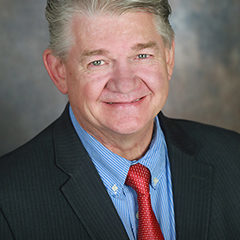
Better results through better choices
Before you have even gotten out of bed in the morning, you have decided several things. Should I hit the snooze button, what am I going to wear today, what do I want for breakfast, or am I even going to get out of bed?
Whether consciously or subconsciously, these choices just seem to occur. It is like when you are going somewhere, you get in your car and the next thing you know you arrive at your destination. You don’t remember the road, the turns. You somehow just show up.
For the most part, none of these outcomes really have a significant impact on your day or your life. They just become the results of accepting things as they are. But what happens when you are put in the position that your thought process now begins to impact your life? Your financial circumstances, your relationships, your career, your children, your job, and so on.
Bias
Studies have shown that most decisions have little to do with intelligence, education, background or knowledge. They are more likely to be made based on what we have known, been exposed to, or have come to believe what we interpret as truth. This is referred to as BIAS. Bias has been developed by being exposed to an idea, whether through friends, family or others, as the way a subject is defined to them. You are comfortable with it because you have seen it before, and it influences your thoughts and reduces your anxiety about failure.
But what happens when your choice is in conflict with the outcome? Many times we discount it as an aberration that is not what would normally occur. We assume that we can’t be wrong because we already know everything and dig no deeper to discover the true reason.
Bias also allows us to address another age-old casino issue. We have all heard and probably are guilty of: Because that’s the way we have always done it.
History is a great teacher because it allows us to evaluate circumstances, to figure out not only what happened, but also allows us to better predict the future.
Strategic and Critical Thinking
As we move away from Bias, we start to develop skills in Critical and Strategic thinking. Although applicable in all areas, we associate this more with business-related situations. To me, this centers around results-based activity. What we don’t realize is that for every action we choose, there are consequences of those actions. The action is the Cause and the reaction is the Effect. Cause and Effect makes you think before you move. If you are considering doing something (Cause) and you are evaluating the outcome (Effect), and those results don’t look good, you probably need to reconsider and do something different.
Probably the most expensive capital purchase that a casino has each year is the purchase of new slot machines. The purchase of just forty games could easily be $1,000,000. So how do you decide which games to buy?
First of all, you all have information available through your slot system or other analytic software. You can rank them from most to least profitable by win or coin-in. That’s a start. Then by popularity you look at:
- Game Theme
- Denomination
- Manufacturer
- Floor location
- Percentage of floor
- Cost
As you all know, there are no guarantees when you spend three to four million dollars on slot machines that they are going to get played. So instead of putting all your eggs in one basket and buying all your games from one company, you spread it around. I have said many times that if you’re going to make a mistake, make a small mistake.
- Bring games in with small batches (four to six games) to prove themselves
- Run trials if possible
- Get performance guarantees that they will upgrade them for six months to a year
Nothing is foolproof. But by strategically and systematically approaching your decision, you have narrowed the chance of failure and greatly improved the chance of it becoming successful.
The Mind has three distinctive functions:
- Thinking
- Feeling
- Wanting
These three functions are very much related. They tell us why things are the way they are, measuring the good and the bad, and how to go about obtaining it. Hopefully by evaluating these functions, it allows us to make better choices and to avoid or minimize poor results.
However, nothing is foolproof. Some of the best learning methods are through trial and error. But if we learn nothing and continue to repeat the same mistakes that we have made previously, then we need only to look in the mirror to see why we continue to get poor results.
Results
Business today is driven by Analytics. Whether consumer preference, marketing strategy, sports, or even dating. Just having statistics may still not be providing you with all the information you need to make better decisions. Most significant is making sure that you are analyzing the right information.
- Do you have all the facts?
- Are you interpreting them correctly?
- Are you asking the right questions to begin with?
- How does this change what you would do the next time?
Too often having a bunch of numbers only gives us the chance to support our desired outcome. To tell our boss it was successful and, maybe even more damaging, about why we should do it again.
Begin with the End in Mind
Many of you may have heard this phrase before. For those of you familiar with Stephen Covey’s 7 Habits books, this is my favorite of the seven. What does it mean, and how does it affect making decisions? When planning a project most people start with what the project will be.
- Date
- Prizes
- Qualifications
- Rules
- Locations, etc.
I want to start with the results. I want to know when this event/project/goal is over, what are we going to achieve? Revenue, policy and procedures, construction. What did I expect and what did I get?
Regardless of the project, if it was based on revenue, then that is the number I am starting with.
$50,000 When it is all said and done, I want $50,000 more than what we began with. In order to do that, I need to know:
- How many people need to attend?
- How much money will they need to spend per person?
- What are the prizes that I need to offer in order to get them to attend?
- How do I invite them to get them to show up?
- How do they qualify?
- How do we staff it?
- When do we have it so it doesn’t conflict with something else that’s going on?
- What do I call it?
By starting at the end, I have defined what I want to achieve and how to get there. As opposed to the beginning, and hoping or accepting whatever the end result will be.
Leadership
As a leader of an organization or a department, part of our responsibility is helping those around us make better choices. How we think, decide and lead shapes the future of our company and our lives. We have just scratched the surface of this topic in this article. How we evaluate, apply and measure leads to an ongoing structure of determining the success of the people and company we represent. Taking this information and applying the functionality to where it can be implemented is the next challenge. Be diligent in accepting those responsibilities and enjoy the success that comes with it.







